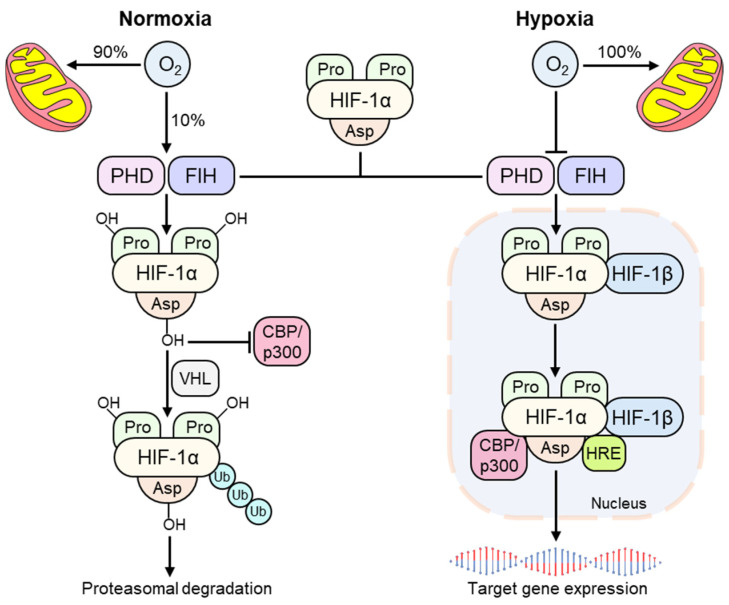Figure 2.
The hypoxia-inducible factor (HIF) pathway. In normoxia, most O2 is consumed by the mitochondria and remaining O2 facilitates hydroxylation of HIF by PHDs and FIH, leading to ubiquitin attachment by VHL E3 ubiquitin ligase. This results in proteasomal degradation and transcriptional repression of HIF. In hypoxia, virtually all O2 is used by the mitochondria resulting in hydroxylase inhibition. Stabilized HIF-α dimerizes with HIF-1β thereby forming a heterodimeric complex which binds to HRE and CBP/p300, leading to increased transcriptional expression of HIF-dependent genes.

